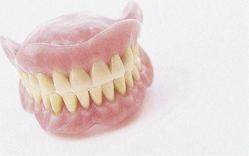
A dental filling or restoration is a restorative material used to restore the function, integrity and morphology of missing tooth structure. The structured loss typically results from caries or external trauma. Loss can also occur intentionally during tooth preparation to improve the aesthetics or the physical integrity of the intended restorative material.
Because of improvement in disease prevention and availability of new material, fewer fillings are needed now than in the past and filling material is more aesthetically pleasing.
If you need to have a tooth restored (filled), your options may include several different types of material. Your dentist will discuss with you the material which is most suitable for you and the tooth that needs to be filled. Each material has advantages and disadvantages which you should be aware of, so that you can make an informed choice.
Types of filling
There are two types of dental fillings — direct and indirect.
Direct fillings are placed immediately into a prepared cavity in a single visit. They include dental amalgam, glass ionomers and some resin composites filling. The dentist prepares the tooth, places the filling and adjusts it during one appointment.
Indirect fillings generally require two or more visits. The dentist prepares the tooth and makes an impression of the area to be restored during the first visit. During the following visits, the dentist cements the restoration into the prepared cavity and adjusts it as needed.
Amalgam filling or silver filling
Used by dentists for more than a century, dental amalgam is the most thoroughly researched and tested restorative material. It is durable, easy to use, lightly resistant to wear and relatively inexpensive. For these reasons, it remains a valued treatment option for dentists and their patients.
Dental amalgam is a stable alloy made by combining elemental mercury, silver, tin, copper and possibly other metallic elements. Although dental amalgam continues to be a safe, commonly used restorative material, some concerns have been raised because of its mercury content. However, the mercury in amalgam combines with other metals to render it stable and safe for use in filling teeth.
In spite of these concerns, the major United States and international scientific and health bodies, such as the National Institute of Health, the US Public Health Service, the Centers for Disease Control and Prevention, the Food and Drug Administration and the World Health Organisation are satisfied that dental amalgam is a safe, reliable and effective restorative material.
Because amalgam filling can withstand very high chewing foods, they are partially useful in restoring molars in the back of the mouth where chewing food is greatest. They are also useful in areas where a cavity preparation is difficult to keep dry during the filling replacement, such as in deep filling below the gum line.
Composite filling or white filling

White fillings are a mixture of glass or quartz filler in a resin medium that produces a tooth-coloured filling. They are sometimes referred to as composites or filled resins. Composite filling provide good durability and resistance to fractures in small to mid-size restorations that need to withstand moderate chewing pressure. Less tooth structure is removed when the dentist prepares the tooth and this may result in a smaller filling than that of an amalgam.
Composites can also be bonded or held in a cavity with adhesives, often allowing the dentist to make a more conservative repair to the tooth. The cost is moderate and depends on the size of the filling and the technique which the dentist uses. It generally takes longer to place a composite filling than an amalgam filling. Composite fillings require a cavity that can be kept clean and dry during filling and they are subject to becoming stained and discoloured over time.
Dr Dennis Jones is a dentist in private practice; email: yourhealth@gleanerjm.com.
